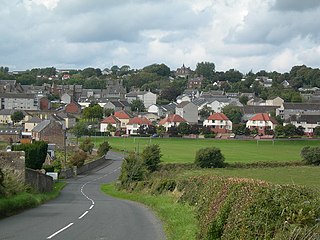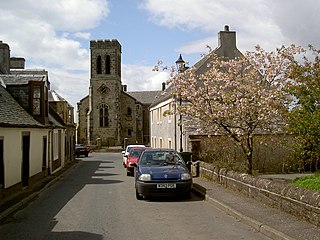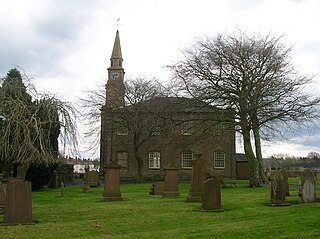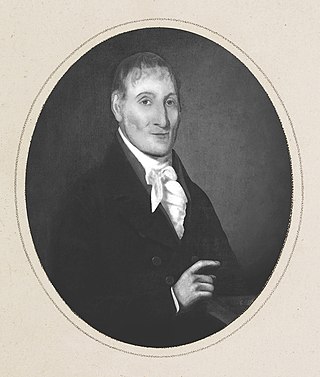Related Research Articles

Ayrshire is a historic county and registration county, in south-west Scotland, located on the shores of the Firth of Clyde. The lieutenancy area of Ayrshire and Arran covers the entirety of the historic county as well as the island of Arran, formerly part of the historic county of Buteshire. Its principal towns include Ayr, Kilmarnock and Irvine and it borders the counties of Renfrewshire and Lanarkshire to the north-east, Dumfriesshire to the south-east, and Kirkcudbrightshire and Wigtownshire to the south. Like many other counties of Scotland, it currently has no administrative function, instead being sub-divided into the council areas of East Ayrshire, North Ayrshire and South Ayrshire. It has a population of approximately 366,800.

South Ayrshire is one of thirty-two council areas of Scotland, covering the southern part of Ayrshire. It borders onto Dumfries and Galloway, East Ayrshire and North Ayrshire. The area had an estimated population in 2021 of 112,450.

Girvan is a burgh and harbour town in Carrick, South Ayrshire, Scotland. Girvan is situated on the east coast of the Firth of Clyde, with a population of about 6,450. It lies 21 miles (34 km) south of Ayr, and 29 miles (47 km) north of Stranraer, the main ferry port from Scotland to Northern Ireland.

Troon is a town and sea port in South Ayrshire, situated on the west coast of Ayrshire in Scotland, about eight miles north of Ayr and three miles northwest of Glasgow Prestwick Airport.

Prestwick is a town in South Ayrshire on the west coast of Ayrshire in Scotland about 30 miles southwest of Glasgow. It adjoins the larger town of Ayr to the south on the Firth of Clyde coast, the centre of which is about two miles south, and the small village of Monkton to the north. It had a population of 14,901 at the 2011 census.

Maybole is a town and former burgh of barony and police burgh in South Ayrshire, Scotland. It had an estimated population of 4,580 in 2020. It is situated 9 miles (14 km) south of Ayr and 50 miles (80 km) southwest of Glasgow by the Glasgow and South Western Railway. The town is bypassed by the A77.

Kirkmichael is a village in South Ayrshire, Scotland, located between Patna, Maybole and Straiton. It was also a civil parish. In 1991 it had a population of 647.
Lambroughton is a village in the old Barony of Kilmaurs, Scotland. This is a rural area famous for its milk and cheese production and the Ayrshire or Dunlop breed of cattle.

Dunlop is a village and parish in East Ayrshire, Scotland. It lies on the A735, north-east of Stewarton, seven miles from Kilmarnock. The road runs on to Lugton and the B706 enters the village from Beith and Burnhouse.

Tarbolton is a village in South Ayrshire, Scotland. It is near Failford, Mauchline, Ayr, and Kilmarnock. The old Fail Monastery was nearby and Robert Burns connections are strong, including the Bachelors' Club museum.

Dunure is a small village in the South Ayrshire area of Scotland about five miles from Ayr, Scotland. It is located on the coast of the Firth of Clyde, and is near to Maybole, south of Ayr.
Kilmaurs Place, The Place or Kilmaurs House, is an old mansion house and the ruins of Kilmaurs Tower grid reference NS41234112 are partly incorporated, Kilmaurs, East Ayrshire, Scotland. The house stands on a prominence above the Carmel Water and has a commanding view of the surrounding area. Once the seat of the Cunningham Earls of Glencairn it ceased to be the main residence after 1484 when Finlaystone became the family seat. Not to be confused with Kilmaurs Castle that stood on the lands of Jocksthorn Farm.

Busbie Castle was situated in what is now known as Knockentiber, a village in East Ayrshire, Parish of Kilmaurs, Scotland. Knockentiber is 2 miles (3.2 km) WNW of Kilmarnock and 1/2 mile NE of Crosshouse. The castle overlooked the Carmel Glen and its Burn, which runs into the River Irvine, a mile or so to the south, after passing through the old Busbie Mill.

Dunduff Castle is a restored stair-tower in South Ayrshire, Scotland, built on the hillside of Brown Carrick Hills above the Drumbane Burn, and overlooking the sea above the village of Dunure.

William Burnes or William Burness was the father of the poet Robert Burns. He was born at either Upper Kinmonth or Clochnahill Farm, Dunnottar, Kincardineshire, and trained as a gardener at Inverugie Castle, Aberdeenshire, before moving to Ayrshire and becoming a tenant farmer. His parents were Robert Burnes and Isabella Keith. He retained the spelling 'Burnes' throughout his life; however, his son favoured the Ayrshire spelling of 'Burns'.
Dalrymple is a village and parish in East Ayrshire, Scotland, lying in the Doon Valley on the north bank of the River Doon. The population is around 1,347.

James Smith of Monkwood Grove was a Scottish botanist and nurseryman. He founded the Monkwood Botanic Garden in Maybole Parish which included several thousand species of exotic and native British plants. A regular consultant of his English contemporaries, he is credited with the discovery of Primula scotica,Salix caprea pendula and several other species of plants native to Scotland. Owing to this particular interest in the flora of Scotland, Smith has been described as the "father of Scottish botany."

Minishant is a village bordering the A77 in the old county of Carrick, South Ayrshire, Scotland. It is located in Maybole Parish, 3+1⁄2 miles from Maybole and standing close to the River Doon. The village was originally named Culroy after the Culroy Burn that runs through it.

Maybole Castle is a 16th-century castle located on High Street in Maybole, South Ayrshire, Scotland. Originally built for the Earls of Cassillis, it is an L-shaped construction with Victorian two-storey extensions. It is associated with a legend of John Faa, in which an earl killed Faa and imprisoned his wife, the Countess of Cassilis, in the castle.
Maybole Football Club was a football club which existed from 1880 to 1891, in the town of Maybole, Ayrshire, Scotland.
References
- 1 2 Scottish Gaelic Studies. University of Aberdeen. 1953. p. 46.